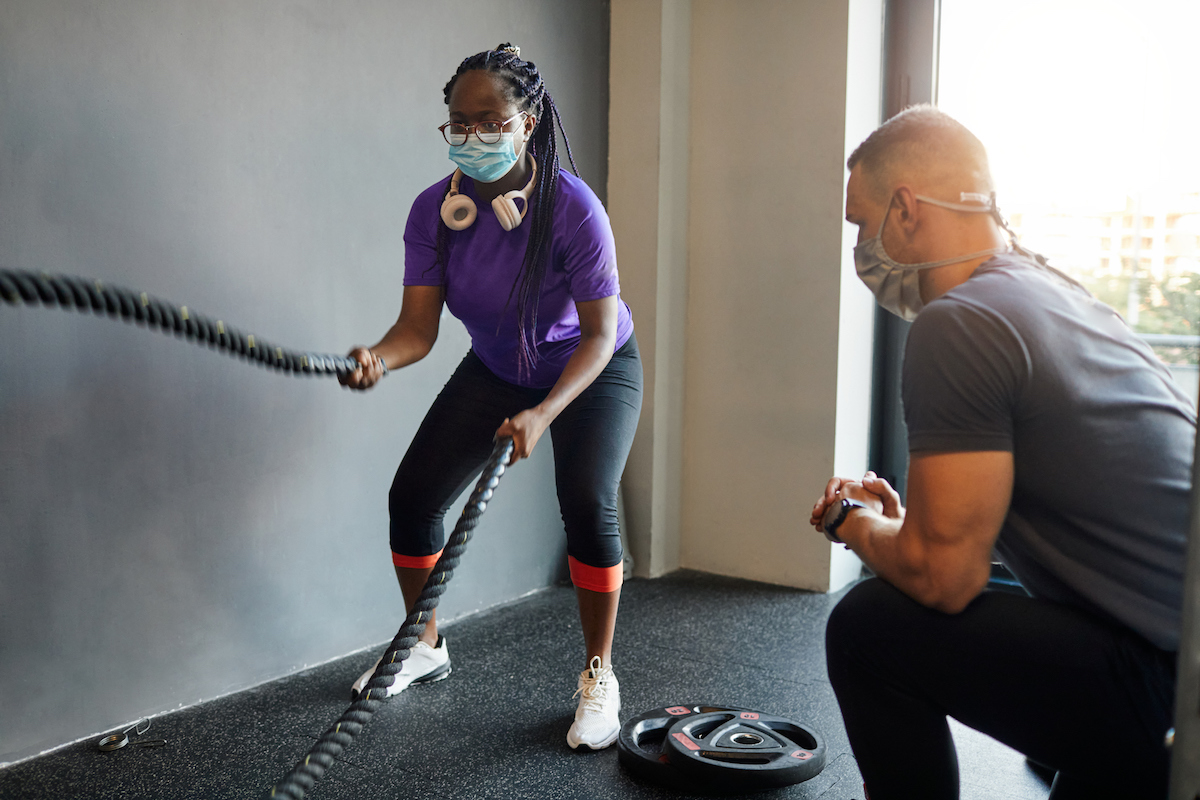<< Back
Study: Exercise While Wearing Mask Doesn’t Affect Blood, Muscle Oxygen Levels

November 13, 2020
Breathing heavily is a result of what most people would consider a good physical workout and, quite possibly, why some have avoided exercise for fear the masks required by the COVID-19 pandemic would either feel suffocating or hamper their performance.
New research from the University of Saskatchewan in Canada, however, shows that performance during a strenuous workout was not affected by the wearing of a layered cloth mask. There was also no detrimental effect from the mask on blood or muscle oxygen levels noted.
“We know wearing a mask can help prevent the spread of COVID-19,” said Kenneth Bruno, site supervisor at the Hartford HealthCare Rehabilitation Network location in Windsor. “Because the heavier breathing most do when exercising means more potentially infectious particles spraying into the air, it is important to wear a mask to protect yourself.”
The Canadian researchers found no evidence that the mask compromised the wearer’s oxygen intake during vigorous exercise, after testing surgical masks and others with three layers of cloth against exercise with no mask. There was also no sign that wearers were rebreathing carbon dioxide expelled while exercising.
The Centers for Disease Control and Prevention recommends wearing face masks in public, and most gyms require them. Still further research classified indoor exercise facilities as “COVID-19 clusters” for the higher-than-average positive rates among users.
Bruno said masks are safe for healthy people to wear while exercising, but anyone with a cardiovascular or respiratory condition might want to lower the intensity of their sessions and talk with their provider first. And if you feel lightheaded, short of breath or dizzy while exercising, stop until the symptoms go away.
You might also want to consider special masks for your workouts. Many athletic-wear makers offer their own.
Bruno suggested these tips for choosing a mask for exercise:
- Fit your mask well. You don’t want it to fall off or need constant adjusting during your workout. Make sure it covers your nose and mouth, fitting snugly over your cheeks and nose. Bandanas are too loose and can let droplets escape.
- Pick tightly-woven materials. At least two layers will keep out more airborne droplets and tighter weaves (70 threads per inch) are more substantial than thinner materials. Choose such fabrics as cotton, flannel, muslin, nylon or rayon. Make sure the material doesn’t soak up moisture or you’ll be left with a mask that’s heavy and soggy with sweat. Runners, cyclists and others might want to try masks made from moisture-wicking materials.
- Carry extra. Moisture reduces the effectiveness of the mask so you might want to change mid-workout if yours gets sweaty. You’ll also need a clean, dry mask after you’re done.
Other guidelines such as social distancing and hand washing should also be part of your regular workout as added precautions against infection, Bruno said.